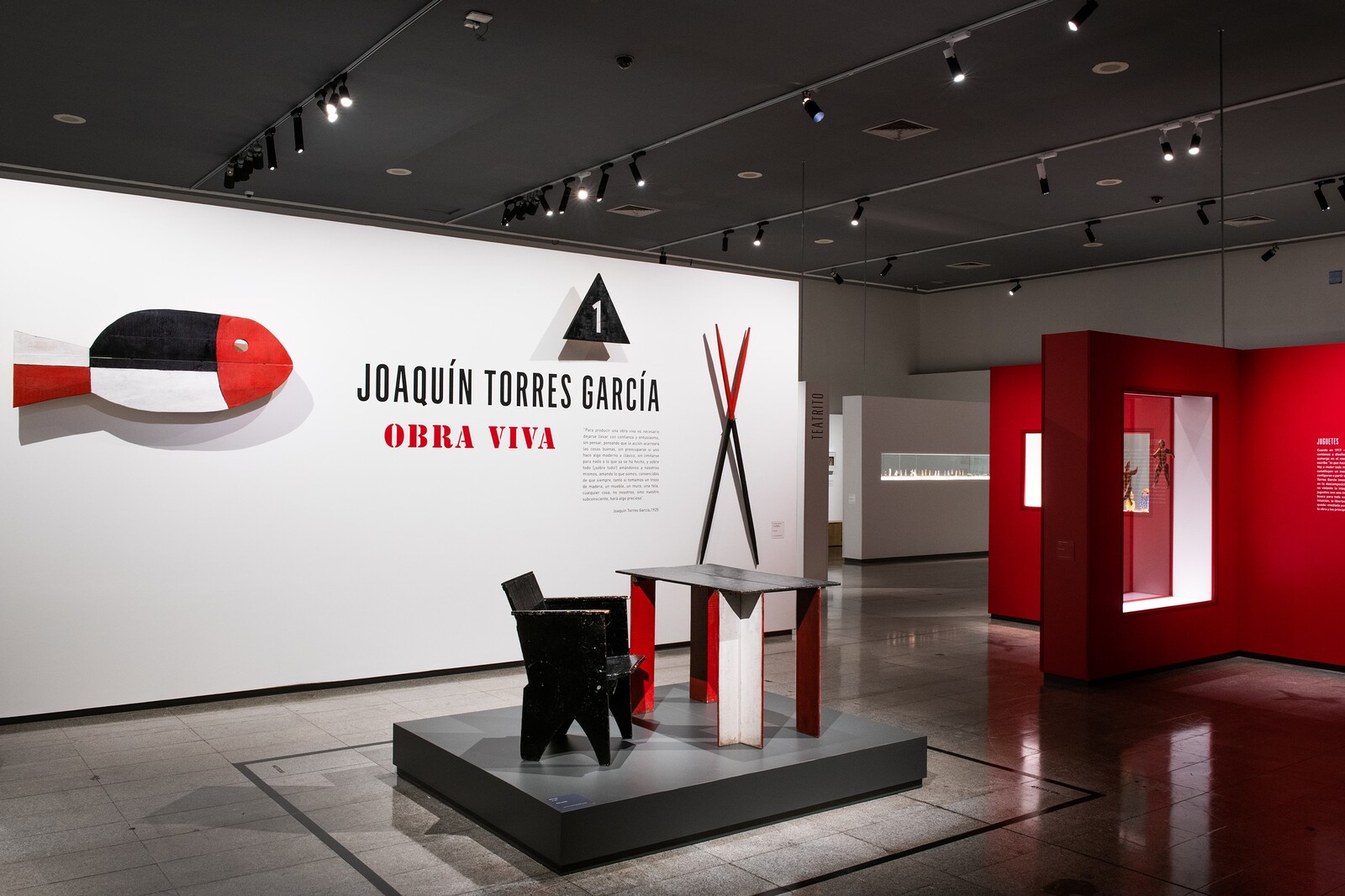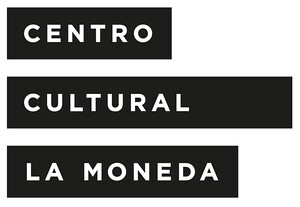Obra Viva
April 12–July 28, 2019
Plaza de la Ciudadanía 26
8340521 Santiago
Chile
Hours: Monday–Sunday 9:30am–7:30pm
T +56 2 2355 6535
An unprecedented exhibition in Chile brings together the work and legacy of Joaquín Torres García
Centro Cultural La Moneda (CCLM), a space inaugurated in January 2006, constitutes a landmark within Santiago de Chile’s civic quarters. Its programming includes contemporary art and heritage exhibitions, concerts, conferences and seminars, film programs and a variety of activities which display the insights and interests of our times. From April through late July of the present year, one of its main galleries presents Joaquín Torres García. Obra Viva, an exhibition that surveys the legacy of the multifaceted Uruguayan artist, one of the most influential representatives of the 20th-century avant-garde movements in Latin America.
The exhibition’s approach is unprecedented, product of a co-curatorship between Alejandro Díaz, director of the Museo Torres García de Montevideo—institution that houses most of the artist’s work—and the CCLM team, headed by Beatriz Bustos Oyanedel. Interwined troughout ten chapters and over 150 works are glimpses of the artist’s complementary facets as a painter, mentor, and father, accurately reflecting the wide span of his intellectual ideas.
Works form his early period, closer to pictorial tradition, such as Retrato del Señor Gandelbeu (made when he was 12 years old), are featured in dialogue with other paintings executed on canvas, paper, cardboard and wood; collages; articulated toys; letters; conferences; photographs; publications; and the desk that supported his creative process.
Joaquín Torres García (1874-1949) was born in Montevideo and emigrated to Barcelona with his parents at the age of 17. His life was marked by travel and constant uprooting: Madrid, Paris, and New York gave him new perspectives on the city and on modern ways of life. His experience becomes resonant within our current times, marked by the phenomenon of migration.
Curatorial journey
One of the personal aspects that Torres García nurtured early on was his admiration for childhood and his interest in education. Since 1907 he became part of one of the most forward-thinking reforming processes in Spanish pedagogy. He made several contributions through Didáctica del Arte (Art Didactic), and came to the conclusion that artists ought to learn from children and not the other way round. His aim to turn his material explorations into the manufacturing of wooden toys led him to subsequently establish Aladdin Toys company in New York, which would serve as the sustenance of his family, made up of his wife Manolita Piña de Rubies, and their children Olimpia, Augusto, Ifigenia and Horacio.
This playful and intimate dimension of Torres García is reflected in the CCLM exhibition in with works such as Teatrito, a theatre stage with interchangeable set decorations and characters, that also held a didactic role during the upbringing of his children. Replicas of some of these toys were specially made for the exhibition so that attending public could manipulate them, stimulating creativity, ingenuity, and problem-solving skills in children, and embracing play as an impulse for art.
The exhibition’s curatorship is approached as a journey within the universe of this ground-breaking artist, who challenged the language of his time. Torres García championed the autonomy of art, its formal and plastic independence, but remained in close connection with what were its inherently human aspects. Embracing the artwork as a structure, he pursued a synthesis within it, one that could combine reality, human emotions and intellect. From this union, in harmonious existence with the cosmos, emerged the movement he would entitle Universalismo Constructivo [Constructive Universalism].
After an extensive vital journey with his family, he returned to Uruguay in 1934, settling into a period of dissemination of his artistic thought and ideas. He brought together creators and intellectuals, and organized over 500 conferences in six years, all within the scope of his “Curso para la formación de la conciencia artística” (Course for the formation of artistic consciousness). It was in one of these gatherings in 1935 where he presented his own version of the map of America, inverting the traditional representation so that the South faced upwards and the North, downwards. In this way he introduced his now well-known aphorism “Nuestro Norte es el Sur” (Our North is the South), which transgressed—literally and symbolically—the hegemonic language of that moment in time, and particularly, the hegemonic relationship between Europe and America as it was then understood.
Featured in the exhibition is also the emblematic artwork América Invertida (1943); the eloquent drawing summarizes his postulates and represents an invitation for artists to emphatically observe the aesthetic production of indigenous people and, only from there—looking at Latin America from Latin America—to create and advance an avant-garde that is genuinely new for the continent. Also, in 1943 he created Taller Torres García (Torres García Studio) where he recruited upcoming generations; disciples that yielded continuity both to this space and to his thought, well beyond his lifespan.
Through his own production and the imprint transmitted in his ideas, Torres García’s oeuvre connects us with local history and contingency, acting as a reminder of the need to rewrite the narratives of Latin American art history. The close collaboration between CCLM and Museo Torres García of Montevideo also enabled several Chilean and Uruguayan institutions to contribute by lending artwork from their own collections, with the aim of achieving a thorough and comprehensive exhibition.
With Joaquín Torres García. Obra Viva, CCLM strengthens one of its main curatorial objectives: connecting and reading the past within the present. The exhibition builds bridges for the appreciation, reflection and debate of our local imaginaries, both current and bygone. CCLM, as a meeting space for diverse perspectives, invites you to get acquainted with the work of a 20th century man who sought the unprecedented in art and whose legacy remains profoundly contemporary.



